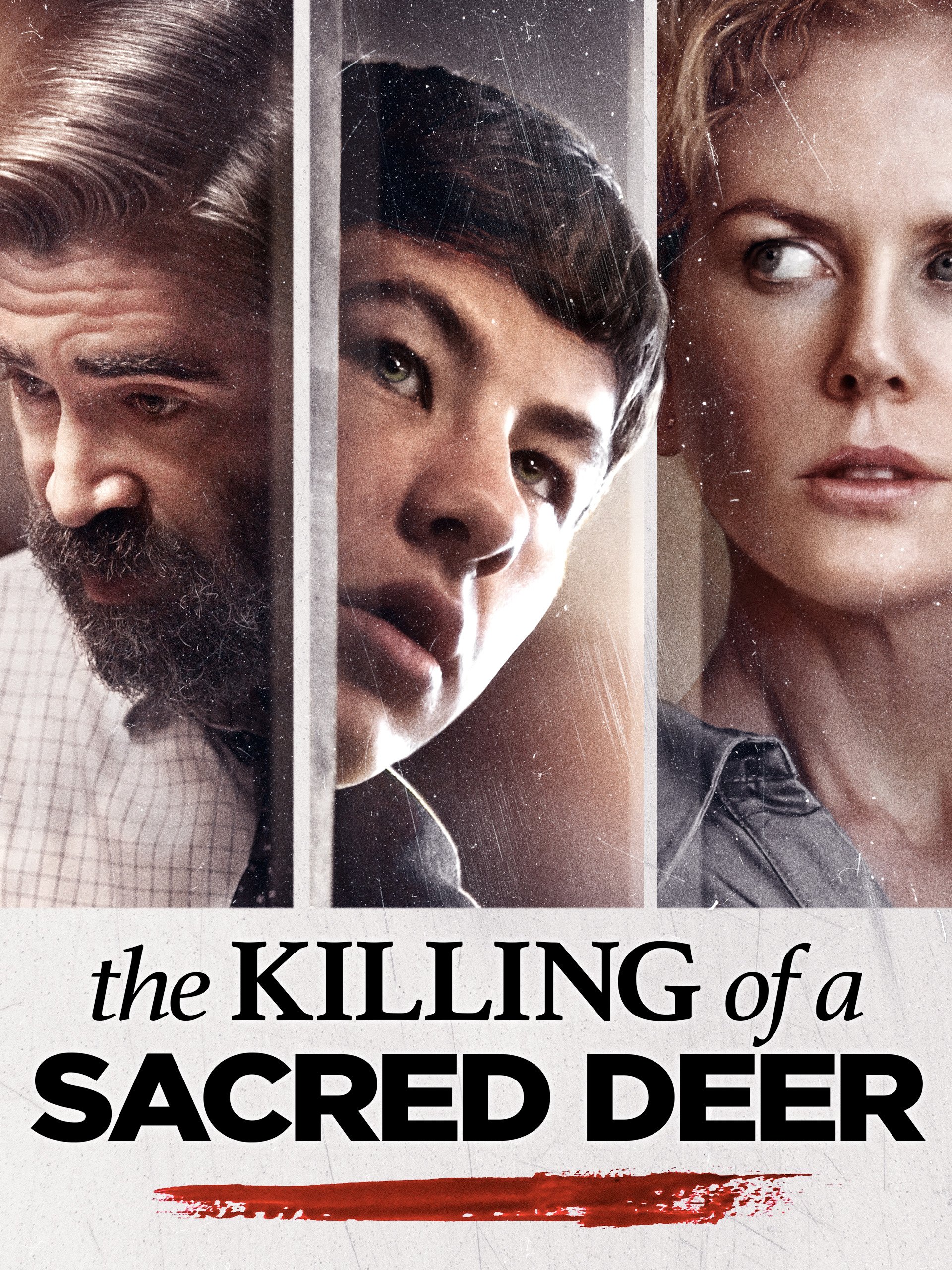We're seeking new members for our 2025 Board of Directors, as well as our founding Associate Board for young professionals 35 and under. Details and application at each of the links above.
The CHIRP Blog
Kevin Fullam writesThe Fourth Wall: The Killing of a Sacred Deer
Welcome to The Fourth Wall, CHIRP's weekly e-conversation on cinema. This week's subject is The Killing of a Sacred Deer.
This edition is written by CHIRP Radio volunteers Kevin Fullam and Clarence Ewing.
 Kevin:
Kevin:
One popular storytelling recipe:
1) Start with one seemingly perfect, well-to-do family.
2) Add one shady interloper.
3) Stir slowly.
It's certainly a formula tried and true in genres ranging from comedy (What About Bob?) to thrillers (Cape Fear). I suspect that part of the trope's appeal stems from the jealousy that we tend to have of pristine families who appear to have it all. And so, we wonder: how much stress can we inject into these households before even fundamentally serene people start to crack?
Steven and Anna Murphy (Colin Farrell and Nicole Kidman) live in a beautiful home in a gorgeous neighborhood. He's a heart surgeon of some renown, and together they're the parents of two cheerful kids, Kim and Bob. When Martin (Barry Keoghan), a socially awkward high-schooler, shows up during one of Steven's shifts, we're originally led to believe that he's simply an overzealous kid eager to ingratiate himself with a star physician. Soon afterwards, however, we discover that they share a dark history... one in which Martin holds Steven accountable for a personal tragedy. And in retribution, Martin calmly lays out the parameters for their new relationship with a chilling succinctness.
Unless Steven makes restitution for what Martin perceives as a gross injustice, Bad Things will start happening to Steven's family. And indeed they do. His children start to lose the use of their legs. Then their appetites. Much like what was said of Arnold's T-800 in The Terminator, Martin can't be reasoned with or bargained with, and he doesn't feel remorse for the children that soon suffer his wrath. He also doesn't want any money -- his required "restitution" is the sacrifice of a family member.
KSanders writesTop 10 Stevie Nicks Deep Cuts
 wiritten by Kyle Sanders
wiritten by Kyle Sanders
If there's one thing I've learned in life, it's that "time makes you bolder." And Stevie Nicks is getting older, too. Yes, this year the Gold Dust Woman turned 70 on May 26th, and as a musician "taken by the wind" she seems to show no signs of slowing down.
The band that made her a household name, Fleetwood Mac, is about to embark on another tour (albeit sans guitarist Lindsey Buckingham), and earlier this year she and her band mates received the MusiCares "Person of the Year" award. Nicks even became "meme-worthy" when her song "Dreams" was included on a meme that went viral.
Looking back on her forty-five years in the music industry, Nicks has proven herself a fashion icon, a musical influence for aspiring female musicians, and one of rock's most celebrated songwriters. She's responsible for such enduring hits like "Rhiannon," "Landslide," "Dreams," "Gold Dust Woman," "Edge of Seventeen," and "Stand Back," but she has also written many other songs that are as valuable as any of those other classic rock mainstays.
In honor of her 70th birthday, here's a list of Stevie Nicks deep cuts (listed in chronological order):
"Crystal" (Buckingham Nicks, 1973/Fleetwood Mac, 1975/Practical Magic, 1998)
The only Nicks-penned tune with ex-boyfriend Lindsey Buckingham on lead vocals, "Crystal" has popped up multiple times throughout Stevie's career, first introduced on the Buckingham Nicks LP, then as a track on the duo's debut with Fleetwood Mac in 1975.
Almost a bookend to Nicks' classic "Landslide," the lyrics showcase a theme of reflection and emotional growth: "How the faces of love have changed turning the pages / And I have changed, oh but you, you remain ageless..."
Nicks would ultimately dust off this song some twenty years later, as a contribution to the Practical Magic soundtrack, this time with her own weathered voice as lead.
SKaiser writes@CHIRPRadio (Week of May 28)
NEW MEDIA
- Features interviewer Josh Kessenich spoke with Sasami Ashworth, known as SASAMI on the heels of the release of her newest single Callous
- First Time: First Dream with Ashley Holman
- Red, White & Blue: An American in Cuba by Brad Morgan
- First Time: First Strike with Briavael O'Reilly
Brad Morgan writesRed, White, & Blue: An American In Cuba
 Words and Pictures by Bradley Morgan
Words and Pictures by Bradley Morgan
In April, I took a trip to Cuba. I have some friends who had visited and I consulted with them when I was planning my trip. They told me about all the fun they had and gave me recommendations on how to make the most of the trip. Going to Cuba just sounded so exciting and carried a certain level of danger, intrigue, and sex appeal because it is such a taboo for Americans. This trip, for me, would be an opportunity to further understand my identity as an American and my relationship with a world unknown to most Americans.
It is very easy to travel to Cuba. You can fly directly from the United States (I flew out of Miami) and obtaining a tourist visa is as easy as entering your credit card information on a travel site. A visa is obtained by making a specific declaration of your intended visit whether it is for education, to visit family, journalism, or whatever else. What declaration you make in this process determines what is legal and illegal for you. For me, my declaration was to support the Cuban people. This meant that I had to spend at least six hours a day going to places and doing things that benefited the people and not the government. This meant not staying in hotels, going to museums, and not lounging at the beach all day.
Clarence Ewing: The Million Year Trip writes@CHIRPRADIO (Week of May 21)
Upcoming Events
- Tuesday, May 22nd:CHIRP Radio New Volunteer meeting at Sulzer Library
- Wednesday, May 23rd: It’s CHIRP Night at The Whistler with Imelda Marcos and Comfort Food
- Saturday, May 26th and Sunday, May 27th: CHIRP Partners with the 2nd Annual Mayfestiversary!
New Media
- First Time: First Dream with Terri Hudson
- Amanda Mayo talks with LANZ
- Marites Valesquez chats with Courtesy
- Rebecca Suzan kicks off Music and Malt, a new series that examines where music and beer meet.